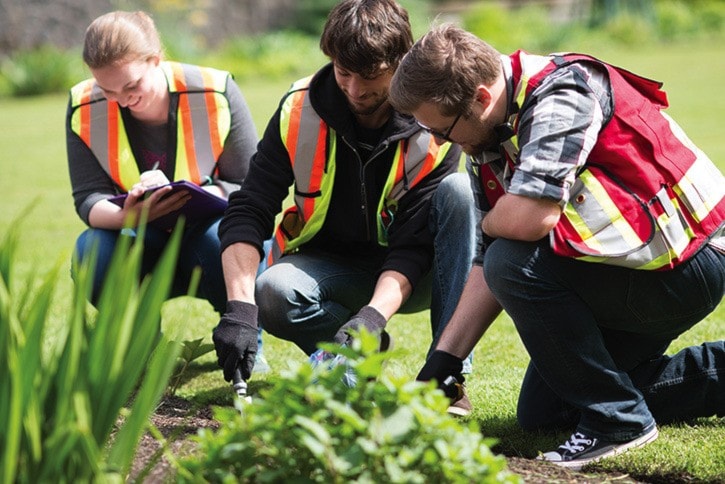Do you know what’s lurking in your garden?
That’s a question a group of Royal Roads University students are trying to unearth.
Three environmental science students, completing their bachelor’s of science at the Colwood-based school, are digging up backyards, gardens and boulevards across Greater Victoria as part of the Healing City Soils project.
“We’re determining possible heavy metal contamination,” said Shawna Cheyne, adding that the group is focusing on lead, mercury, arsenic and cadmium. “Those are the ones most harmful to humans.”
Tests conducted by the group, which also includes James Heron and Michael Rae, could reveal approximately 40 heavy metal contaminants in the soil samples. All of the information gathered will eventually be made available in a post-project public report expected to be completed by the end of August.
“We can tell exactly what’s in the soil,” said Rae.
That information will be available in more than just reports, which can be challenging for the average gardener to understand.
The group plans to create a virtual map of sites they test in Victoria and Esquimalt that will show the types and levels of contamination they unearth. “People can visually see where the contaminations are,” Cheyne said.
With roughly 100 sites targeted for testing by the end of May, the students have their work cut out for them. They have already tested approximately 50 sites and collected more than 85 soil samples.
To make sure their tests are accurate the group is sending roughly 20 samples to another lab to be independently tested. Cheyne noted some people have also requested a nutrient analysis and those samples will also be sent to an accredited lab for a full analysis.
The project is a partnership between Royal Roads, the Greater Victoria Compost Education Centre and DIY Fungi, with funding from the City of Victoria and the Victoria Foundation.
The Compost Education Centre helped connect the students with people who submitted applications to have their soil tested. Sites were then chosen based on criteria such as location, proximity to industry and known land-use history.
The range of property owners who have come forward varies considerably.
“It’s interesting to see where people are gardening,” Rae said. One recent test site was once a dumping ground that has since had all of that refuse dug up and become a community garden.
Another example he gave was a house built in 1912 that, at some point, had its exterior covered with lead-based paint. When the house was renovated, all of that paint was sanded off the exterior and went straight into the ground, Rae said. “It’s something they might not have thought of back then.”
The group’s hope for their research is to help determine new environmentally-friendly ways to conduct renovations, Cheyne said. That research isn’t only about creating a visual for people to see contaminations. They also have their sights set on raising awareness about potential soil contamination in order grow food safely.
They will sample the top 20 centimetres of soil, or as Rae said, “just enough if you’re growing vegetables … That’s where the roots will pull up bioavailable metals.”
There are still endless advantages to the recent push for more community and backyard gardening, he said, but this project is more of an awareness campaign to remind people to take a look at what they’re using to grow those plants in. “Depending on where we go, this might encourage further studies, even from our school.”
Cheyne added, “it’s a very applicable project … I’m very excited to see where this project goes.”
Marika Smith, executive director of the Compost Education Centre, wants to see this project continue to blossom, with hopes of seeing it expand into the West Shore and Gulf Islands.
“I’m so excited, I’m such a soil nerd,” she said. With a background in soil science, Smith is no stranger to some of the problems lurking beneath the surface. She hopes the project will help people really understand what’s in their soil and keep it from getting overlooked.
“People sort of forget about the soil … You need to grow your soil before you grow your food,” she said.
But soil sampling is not a small expense and the project was met with a number of applications from people eager to get involved, especially with the popularity of boulevard gardening exploding in Victoria.
“People should be able to extrapolate their results based on their neighbourhood … It’s starting really small but there’s scope to make it bigger,” Smith said.
The Compost Education Centre also hopes the project will help further teach people how to rid their soil of contaminants and keep them from entering the food system. Some options include bioremediation with plants, compost and mushrooms. “This (project) basically brings all of these pieces together,” she said.
katie@goldstreamgazette.com
